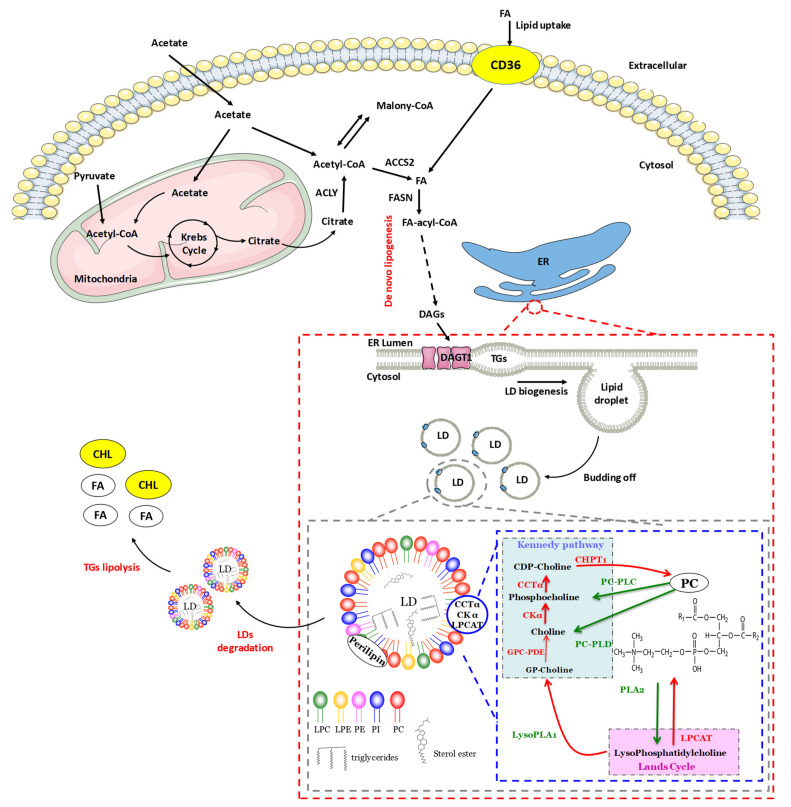Figure 1.
The formation of lipid droplets (LDs) results from the budding of the endoplasmic reticulum (ER) from the outer leaflet. Newly formed LDs can fuse together to increase their volume and surface area. These LDs are made up of very heterogeneous PLs where PC is predominant on the surface of LDs and thus prevents their coalescence, which is essential for the growth of LDs. Some of the enzymes of the Kennedy pathway and Land’s cycle seem to actively participate in the synthesis of PC at the level of LDs. In mammals, it can be synthesized de novo via two synthetic pathways [7] the main of which is the cytidine diphosphate-choline (CDP-choline) pathway, more commonly known as the Kennedy pathway. Choline is first phosphorylated to phosphocholine by choline kinase alpha (CKα) and then phosphocholine cytidylyltransferase alpha (CTTα), the limiting enzyme of this pathway, catalyzes the reaction between phosphocholine and cytidine triphosphate (CTP) to form CDP-choline which is then converted into PC by 1,2-diacylglycerol choline phosphotransferase (CHPT1) [8]. The second pathway for de novo synthesis of PC, known as the phosphatidylethanolamine N-methyltransferase (PEMT) pathway, occurs only in the liver and consists of a series of three PEMT-catalyzed PE methylations [9]. Finally, PC can also be synthesized via the remodeling of PLs during the Lands cycle by reacylation of LPC catalyzed by lysophosphatidylcholine acyltransferases 1, 2, and 4 (LPCAT1, LPCAT2 and LPCAT4) [10]. Ether from sterols is synthesized by coupling sterols with an FA using isoforms 1 and 2 of the enzyme acetyl-coenzyme A acetyltransferase (ACAT). The surface of LDs is composed of amphipathic and polar lipids forming a monolayer distinguishable from other cell membranes by their composition.

